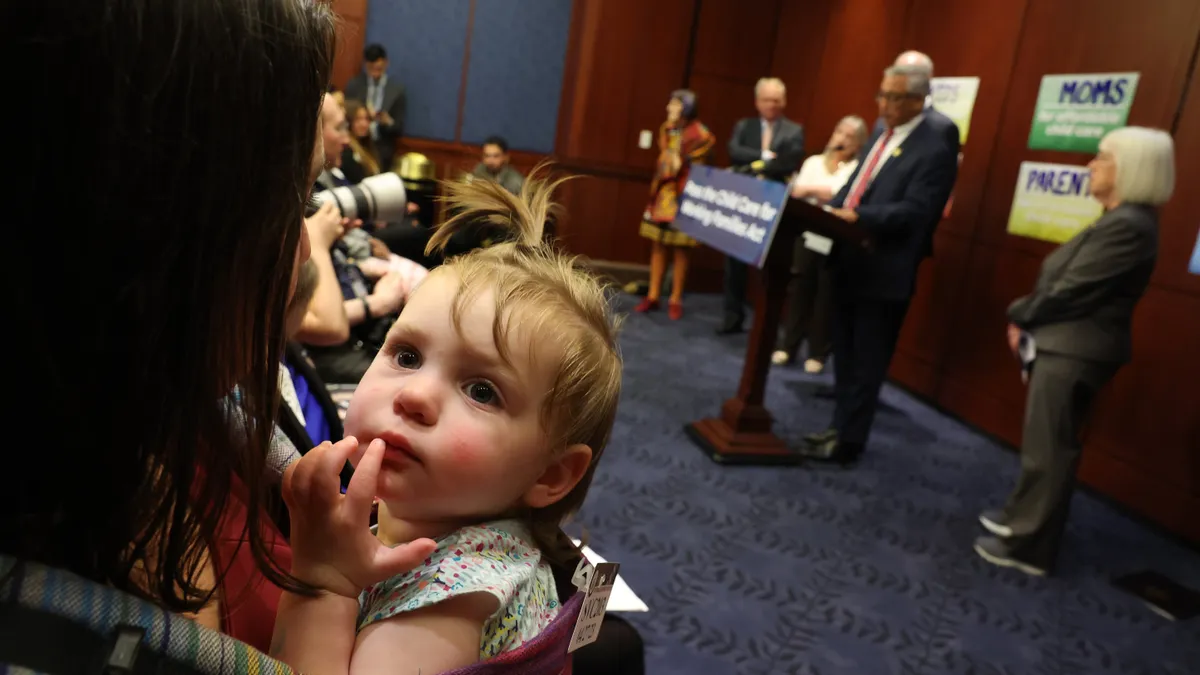When the Society for Human Resource Management (SHRM) unveiled its data-packed survey of employee benefits earlier this week at its annual convention, it also unleashed an onslaught of mainstream media articles that sliced and diced SHRM’s numbers on how the benefits world has changed in the past two decades.
HR Dive looked a small sampling of how the print media covered the survey, and not unexpectedly found some interesting angles.
From 60 to 344
At the Washington Post, reporter Jena McGregor wrote mainly about the massive changes in sheer benefits numbers, as employers today offer nearly 350 fringe benefits, according to SHRM. The story also reeled off the newest of the new, including paid foster child leave, video-delivered healthcare services coverage, genetic testing coverage for diseases such as cancer, etc.
By comparison, the Post story noted that in 1996, SHRM found employers offered somewhere around 60 benefits. A decade ago, that jumped to 219. Today, it hovers around 344.
Evren Esen, director of workforce analytics for SHRM, told the Post that in 1996, employee benefits were pretty much the same from workplace to workplace, including staples such as healthcare, retirement (when actual pensions still existed), vacation and prescription drug coverage.
"Organizations weren't necessarily using benefits as a recruitment and retention tool," Esen told the Post. Today, employers are jumping through all manner of hoops to offer benefits that meet the demands of available talent – it’s become a true differentiator, Esen said.
The Post article also cites Bureau of Labor Statistics data. In 2015, 68.7% of payroll expenses for civilian workers went to salaries (31.3% went to benefits). In 1995, the BLS reported that 71.4% of payroll went to salaries and 28.6% to benefits.
SHRM’s research found that one benefit skyrocketing in the last five years is standalone paid sick leave, shooting up from 33% in 2012 to 41% in only three years.
What benefit has had the most precipitous fall in 20 years? SHRM’s report found credit unions slid from 70% in 1996 to 23% today. But telecommuting won the award for the biggest upswing. Just 20% offered the option in 1996, but today, 60% are on board.
The rise of wellness
Over at Fortune, writer Sy Mukerjee took the wellness data temperature from the SHRM report, noting that while wellness has been a popular perk in the 20-year span, things might be changing. In short, employers appear to be looking for a bigger bang for their wellness buck.
Wellness benefits have taken off – 78% of employers are offering them this year. In 1996, a surprising 54% offered wellness, the report notes.
The Fortune piece explains that some wellness benefits have faded. Perks such as onsite seasonal flu vaccinations, 24-hour nurse hotlines, health/lifestyle coaching, and healthcare coverage premium discounts for not using tobacco products or participating in a weight loss program have all taken a tumble since 2015, according to the SHRM study.
Fortune reports perks such as incentives to complete certain health programs and resources like standing desks, fitness centers and nap rooms are getting some traction, based on the SHRM study. SHRM says this may mean employers are simply thinking more strategically when opting for wellness programs.
Fortune also notes that more employers are moving to a smoking surcharge on insurance premiums, the stick approach, replacing the "if you quit smoking" premium discounts (the so-called carrot approach). The former seems to have more impact and results, Fortune notes.
Fortune points out that while wellness effectiveness is still being debated, SHRM’s data registers lots fans among employers. 77% of employers in the survey with wellness programs believe they are “somewhat or very effective in reducing health care costs.”
What's hot, what's not
Finally, CNN Money’s Jeanne Sahadi took an in-depth look at some of the ups and downs over the 20 years. She writes that some of the losers are subsidized childcare, mortgage assistance and employee stock purchase plans. While the ubiquitous paid leave benefits (parental leave mainly) and work flexibility options are at the top of today’s list.
CNN Money offers a long list of the some of the most interesting perks losing ground, including: onsite health screenings (53% to 31%); relocation benefits (39% to 24%); employee stock purchase plans (28% to 9%); spouse relocation employment assistance (22% to 7%); unpaid sabbaticals (27% to 12%) and the vacation purchase plan (11% to 4%).




















